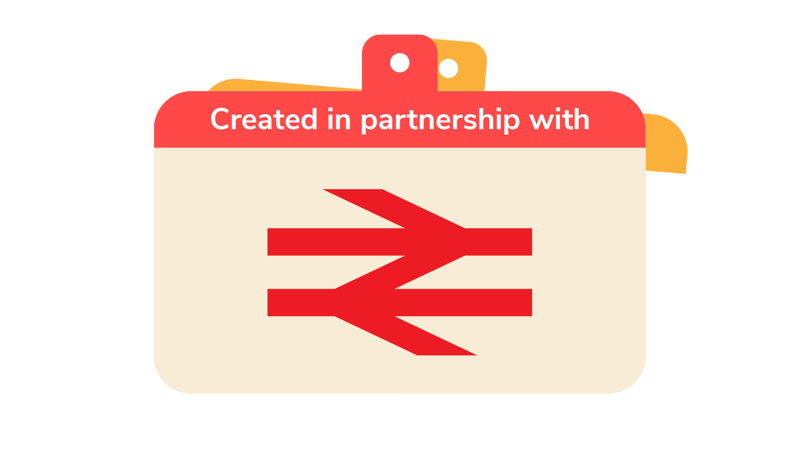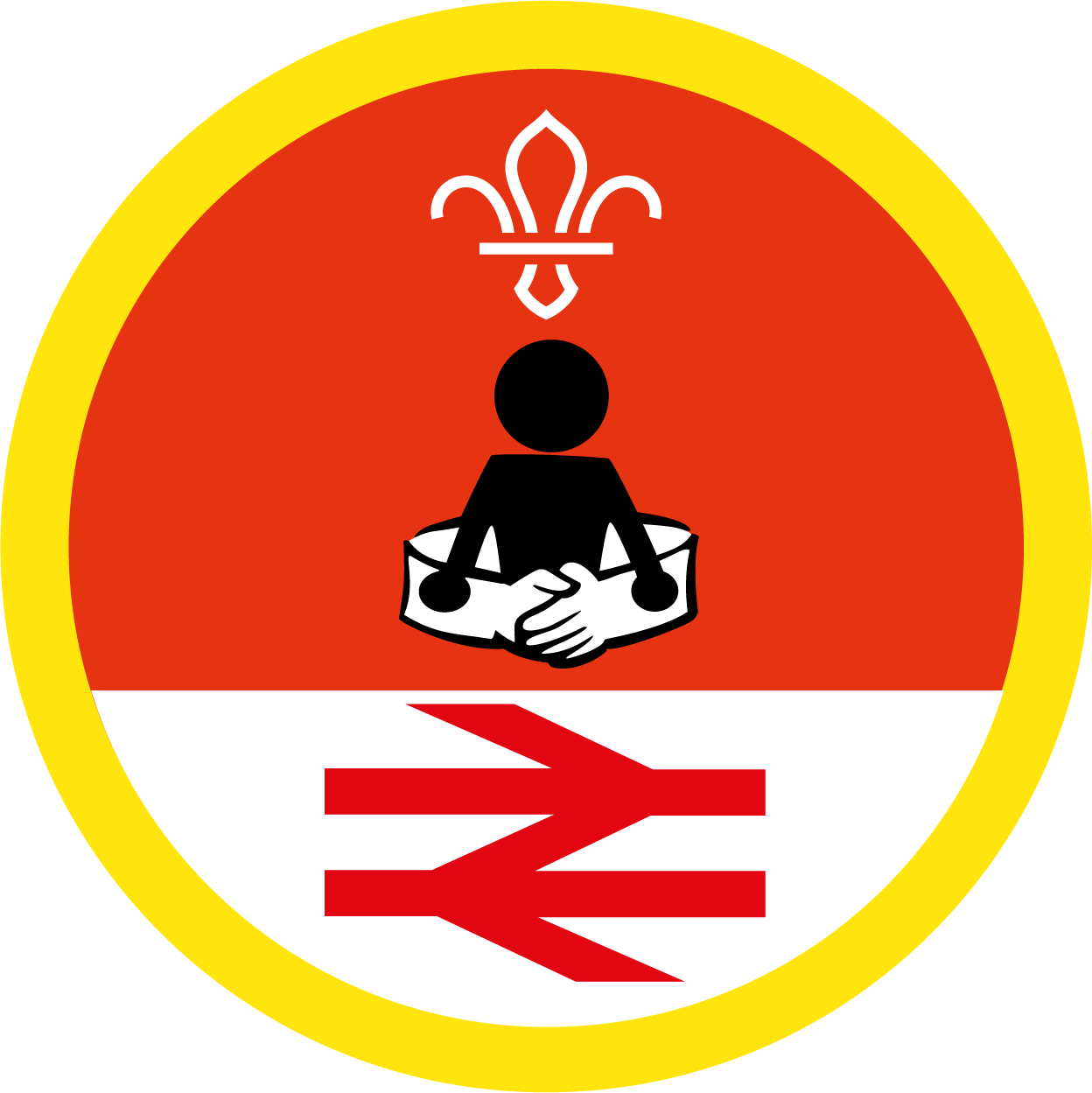
Distracted! You’ve crossed the line
You’ll need
- Scrap paper
- Pens or pencils
- Something to mark lines (for example, chalk, masking tape, or rope)
- Device to play music

In a busy and crowded train station, you can easily be distracted by other people or your mobile phone. At level crossings, you can also be distracted by your music or thoughts as you drift into your own little world. This can be dangerous as you’re not as aware of the risks around you when you’re lost in thought, so always be aware of your surroundings and you'll stay safe on the railway.
The Rail Industry
Before you begin
- This activity is for part of the first requirement of the Cubs Personal Safety Activity Badge. Everyone will need to learn about the dangers of playing on or near another of the things listed to meet the requirement. You could use Dangerous sculptures to do this.
- The Rail Industry has five key messages to keep people safe around railways. This activity focuses on ‘Distracted! You've crossed the line’ and talks about how important it is to be aware of your surroundings.
- You’ll need to prepare some quick, fun activities to act as distractions for the people walking the route. Think about things like singing songs, doing star jumps, pulling silly faces, practising skills like tying knots, or even doing a quick quiz. It’s important not to tell anyone they’re distraction activities, though!
- Prepare a few songs to play during the activity.
- Mark a start line at one end of the meeting place – this is the entrance to the train station. Mark a finish line at the other end – this is the platform.
- Mark a snaking route between the train station and platforms. Put any equipment you need for the activities along the route, and set up the music player.
The first journey
- The person leading the activity should read the key message from the box above. They should explain that this safety message comes from The Rail Industry. Everyone should chat about why it’s important to not be distracted near the railway.
- Everyone should split into groups of three or four.
- The first group should stand at the entrance to the train station. They should spread out so there’s a gap between everyone. Everyone else should get stuck in to the activities dotted around, and the person leading the activity should play the music.
Extra leaders should support the people getting stuck into the activities.
- The first group should travel the route from the entrance to the platform with ‘pigeon steps’ – small steps where their heel touches their toe each step.
Encourage the groups to be really careful and precise with their steps. Don’t mention the other people doing the activities.
- Once the first group have reached the train platform, subtly ask them to note down the things they saw along the route with as much detail as possible. They can do this as a group, and the notes don’t need to be perfect – everyone can chat while one person makes a quick list or drawing.
Don’t let anyone else know that the group are making a list of what happened along the route, or it’ll give the game away for their turn.
- Repeat steps three to five until all of the groups have had a turn at carefully walking the group. Let people know when to swap activities so it stays fun.
The second journey
- Everyone should start a new activity. The first group should walk the route again. They should keep doing their pigeon steps, but this time they should pay attention to what’s going on around them too. Can they take in what’s happening and avoid getting too distracted?
- When the first group reach the platform, they should make another list of what they saw and noticed. There’s no need to be subtle this time, as everyone knows how the game works.
- Once all of the groups have had a turn at the second walk, everyone should gather together.
- Everyone should compare their notes from the walks and reflect.
Reflection
This activity was all about learning to be more independent by knowing how to keep safe. Each group made two lists – which had more things on it? Why? People might think about how it changed when they were paying more attention to their surroundings, rather than focussing on themselves.
In the activity, people were in a safe space. Why is it important to be aware of surroundings around the railway? People could think about all of the risks and dangers they need to avoid. Taking pigeon steps was really distracting. People probably don’t move across train stations like this, but what else might distract them or let them get lost in their bubble? People could think about listening to music, daydreaming, getting too stuck into conversation, reading a book, or focussing on a phone or gaming device.
Safety
All activities must be safely managed. You must complete a thorough risk assessment and take appropriate steps to reduce risk. Use the safety checklist to help you plan and risk assess your activity. Always get approval for the activity, and have suitable supervision and an InTouch process.
- Active games
The game area should be free of hazards. Explain the rules of the game clearly and have a clear way to communicate that the game must stop when needed. Take a look at our guidance on running active games safely.
- Music and films
Make sure music and films are age appropriate for the youngest person present.
- It’s up to you what the route from the entrance to the platform looks like – you could add twists and turns or even some simple obstacles.
-
For an added challenge, the leader of the game should ask players who accidentally cross over the line to stand at one side of the meeting space. Wait until the end of the game to explain to players who crossed the line that they had stepped from the station platform onto the railway line, so were automatically out of the game.
- Make sure the route and activities are accessible for everyone. Some people might not be able to pigeon step – chat to them and figure out what a similar challenge could be. Is there a way for them to move that’s more precise and takes more focus than usual?
- Groups only need one person to make notes. If no one’s confident at writing or drawing, a leader could note down everything they say.
All Scout activities should be inclusive and accessible.
Why not arrange a visit to a local train station? Contact them in advance to arrange a suitable time to visit – staff might be able to give you a tour, chat to everyone, or answer their burning questions.
People could come up with their own activities – they could choose a favourite song or dance routine, or get stuck into a lively debate on something that matters to them!
